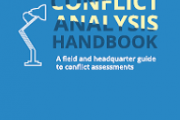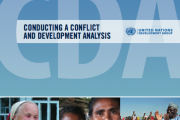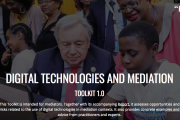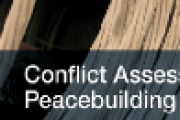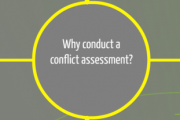Conflict Analysis
Conflict Analysis assists with understanding a specific context and developing strategies for avoiding, mitigating or eliminating violent conflict and its impacts, and strengthening the driving forces of peace. Conflict analysis takes a systematic, holistic approach to:
- Understanding the background and history of the society, including factors that have previously enabled or inhibited conflict;
- Identifying all the relevant actors and stakeholders, including women and ‘peace capacities’ such as CSOs and other affected groups;
- Understanding the perspectives of these actors and how they relate to each other; and
- dentifying the causes of conflict.
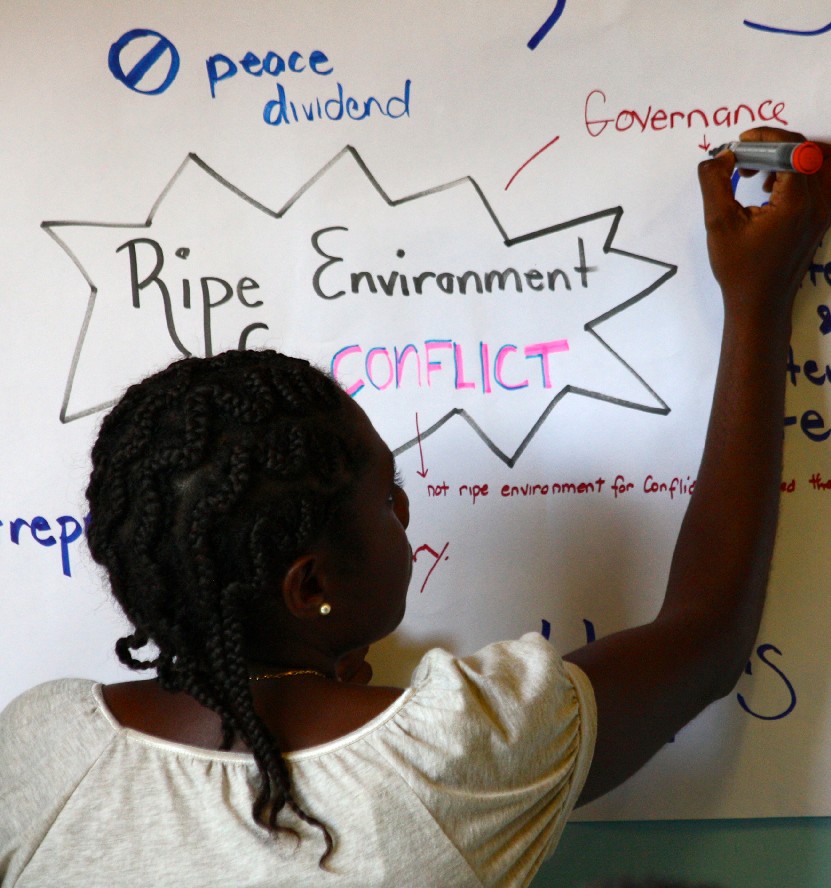
Conflict analysis is relevant not only in conflict-affected areas, where it informs responses to mitigate violence, but also to look at opportunities for reinforcing the foundations of peaceful societies through development efforts that strengthen their resilience, particularly infrastructures for peace. Conflict analysis provides an evidence base to enable the management of transitions from one political situation to another, mitigate the impact turbulence and reduce the likelihood of the (re-) emergence of violent conflict.
Why is conflict analysis important?
Applying a conflict analysis lens prevents national and international actors from concentrating resources and efforts only on responding to the symptoms of conflict, but rather supporting national counterparts and governments to engage in effective political processes through analysis of causality, linkages, entry-points and opportunities for action.
Furthermore, the process of generating a deeper understanding of the peace and conflict dynamics in a particular situation helps international actors ensure that a broader, more inclusive set of groups and communities are included in development and peacebuilding processes. Where conflict has already become violent, conflict analysis can contribute to deepening understanding on ways to possibly to de-escalate violence and manage its consequences, while simultaneously addressing its causes.
Critically, conflict analysis examines peace engines, or peace capacities, i.e. elements within a society that mitigate the emergence and proliferation of violent conflict and strengthen the foundations for peace, drawing upon the innate resilience of a society. Conflict analysis can serve to identify these peace engines, how and where they strengthen peace, and their potential to prevent of violent conflict.
Complementing a conflict analysis with human rights and political analysis tools can provide a more comprehensive overview of the contextual dynamics and the root causes of conflict, which can in turn support early detection of a worsening situation or new issues that need to be addressed. As recognized by the UN 'Rights up Front' initiative, early signs of human rights violations are often the clearest indications of a looming conflict. A comprehensive and common analysis of the human rights situation and conflict drivers enables the organization to take system-wide actions to prevent greater violations from occurring.

